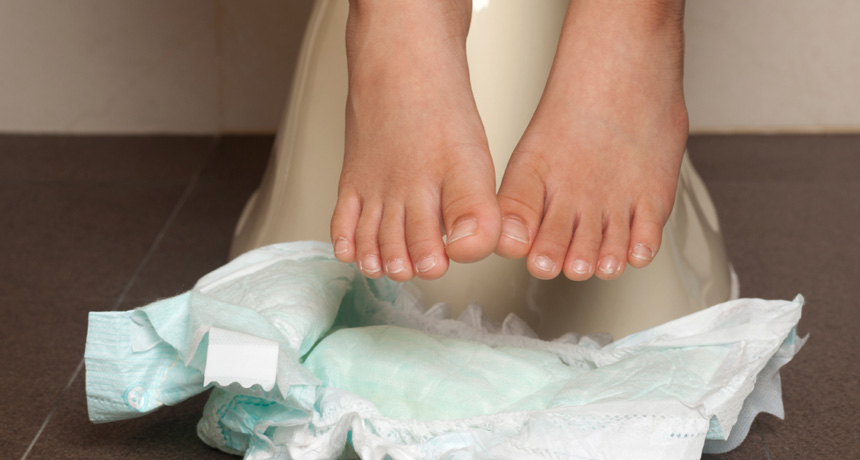The (almost non-existent) science of potty training

The science of potty training is woefully thin, leaving parents to figure out how to ditch the diapers on their own.
Joxxxxjo/ iStockphoto
- More than 2 years ago
This morning, as I watched my toddler slurp milk out of her cereal bowl, I was struck by how much parental energy I spend handling the things that go into her body and the things that come out of it. When I got to work with that particular breakfast thought still on my mind, I typed “toilet training” straight into PubMed. Maybe science is ready to lead my family into a diaper-free existence, I thought. And I was wrong.
The scientific literature on toilet training children amounts to barely a trickle. (See what I did there?) Yet those slim pickings don’t stop people on the Internet from claiming they know the very best way to train your child to use the potty. There’s potty boot camp technique, the M&M bribe method, the nontraining approach in which a child trains himself, and countless other approaches. Books galore promise to train your kid quickly and easily. So which approach works? And when should you try it? The truth is that despite claims to the contrary, nobody really knows.
Here, I offer my questions about toilet training and answers that surely won’t satisfy. But they might at least provide some interesting potty talk.
How should I toilet train my kid?
Despite the seemingly endless variety of toilet training methods, the programs all seem to distill into two major approaches: child-led and parent-led. The child-led version was introduced in 1962 by pediatrician T. Berry Brazelton, who argued that children ought to set the pace for their own toileting. The competing theory was described in 1973 by psychologists Nathan Azrin and Richard Foxx in their paper, “Dry pants: a rapid method of toilet training children.” After following an intense parent-led regimen, children were toilet trained in about four hours, the team reported. Whether these quickly won gains lasted wasn’t clear.
Despite their seasoned ages, these two approaches (see this appendix for the nitty gritty breakdown of each method) haven’t yet battled it out in a well-designed study. So for now, considerations like parental style, time commitment and kid personality will be more important than scientific evidence in choosing a toilet training approach.
When do I start?
By 18 months, most children have developed enough bladder and bowel control to physically complete toilet training, many researchers think. But when it comes to successful toilet training, lots of other things are important too. A kid’s temperament, communication skills and motor abilities can all play major roles in toilet training success.
Culture has a huge part in this, too. In parts of Africa and Asia, toilet training can start in the weeks after birth, with babies achieving daytime and nighttime dryness around 6 months. On average, kids in Iran are toilet trained just before they turned 2, one study found. That early start used to be the norm in the United States, too. A study of Baltimore children born in 1952 found that about half were potty trained by age 2. Lately, though, that age has been creeping up. A 2004 study found that on average, kids were trained around age 3. Choosing the right time can be fraught. Start too soon and you can traumatize your kid, some people say. There’s not much evidence for that idea, but there does seem to be one downside to jumping the gun: Potty training might take longer. Younger kids (between ages 18 and 26 months) were able to toilet train at an earlier age, but it also took them longer, scientists reported in 2002 in Pediatrics.
As for waiting too long, there are hints that kids who toilet train later might have slightly higher risks of problems like incontinence and urinary tract infections. However, it’s not at all clear that one leads to the other. Other studies have found no links between the timing of toilet training and urological problems.
So where does this leave me, the eager-to-potty-train parent of a 19-month old? In a way, the muddled science of toilet training simplifies things: Because there is no one right answer, I don’t have to worry that I’m doing it wrong. For now, I think we’re going to let Baby V lead the charge, though a little blue potty sits optimistically in our bathroom, ready whenever the urge might strike. So far, her relationship with the potty is to point at it and say “pee poop.” That’s progress, right?
Follow me on Twitter: @lssciencenews







